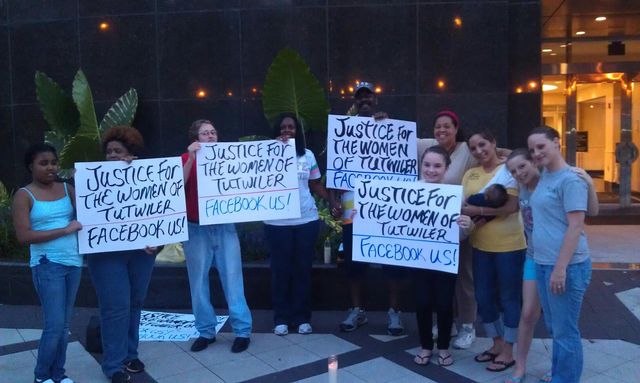
Alabama is one of the epicenters of imprisonment in the United States. The government calculates rate of incarceration as the number of prisoners sentenced to more than 1 year per 100,000 U.S. residents. The national rate of incarceration is 502. Alabama’s is 650. The national rate of incarceration of women is 67. Alabama’s is 95. Where the national rate of incarceration women dropped by a little over 1% in the last year, in Alabama, it rose by 9%.
Alabama has one prison for women, the Julia Tutwiler Prison for Women, located in Wetumpka, Alabama. The prison was built in 1942, and designed to hold at the very most 370 women. In 2002, it held over 1,000 women prisoners. That’s when the prisoners sued the state, in what became the Laube v. Campbell case. The women won, District Court Judge Myron Thompson declared the prison “a time bomb ready to explode facility-wide at any unexpected moment”. Judge Thompson found the overcrowding to be in violation of the U.S. Constitution.
So, what did the State do? It started shipping women out of State, particularly to the South Louisiana Correctional Center, in Basile, Louisiana. Where Alabama’s rate of incarceration is 650, Louisiana’s is 881, the highest in the country. Where Alabama’s rate of incarceration of women is 95, Louisiana’s is 113, second only to that of Oklahoma. But hey, at least they’re not `overcrowded’.
Women would be moved three and four times, without prior notification, in the middle of the night, and without any apparent concern for their situation. Pregnant women were moved, women in rehab programs and educational programs were moved, women in medical treatment programs were moved. The South Louisiana Correctional Center is a for-profit, run by LCS Correction Services. The women who were moved found lots of correction and little to no service. For those in programs, such as educational or treatment programs, time in Basile was time lost, and thus time added on to their prison stay. None of that mattered. What mattered was `reducing the prison population’. What mattered was accounting. The prisoners were numbers, not people, not humans, not women. Just numbers.
That shell game didn’t work, and so now Alabama is experimenting with something called Supervised Reentry Program, which, it is hoped, will reduce the number of women prisoners in Alabama in a more reasonable and sensible way. Basically, the program takes `good prisoners’, and especially those who are in for non-violent offenses, and puts them in supervised residential programs, offers training and counseling, and tries to create a pathway for `reentry’.
If the State had consulted with the women right away, they would have come up, right away, with a more reasonable and sensible program.
Erline Bibbs was one of the women in the Laube v Campbell class. She then became a founding member of the Longtimers/Insiders. The Longtimers/Insiders were women prisoners from Tutwiler who had been shipped to Basile. With the help of the Southern Center for Human Rights, they studied and learned. In Bibbs’ words, the women learned “to organize and … how to make a difference in the right way.”
The women prisoners of Alabama want to see women helped rather than locked up. For themselves, and for other women prisoners, they want to be in the processes of decision-making concerning their own lives. For example, they want to face their victims. They want “the opportunity to present to the parole board in a face-to-face hearing our real selves and how we have changed through the years. We believe our obligations are with the victims’ families, not professional victims’ groups or politicians who use victims for their own gain.”
The women’s class action suit against Alabama charged the State with indifference. These women are the difference. They are the ones to tell the stories of their lives. They must be the authors and the judges of `prison reform’.
What do the women prisoners of Alabama want? Justice. When do they want it? Now.
(Photo Credit: Justice for the Women of Tutwiler / Facebook)